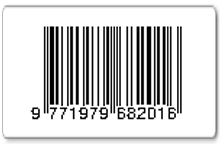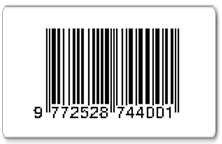Fraud Diamond Analysis In Fraudulent Financial Statement Detection Using Beneish M-Score
Abstract
Keywords
Full Text:
PDFReferences
REFERENCES
Agusputri, H., & Sofie, S. (2019). Faktor - Faktor Yang Berpengaruh Terhadap Fraudulent Financial Reporting Dengan Menggunakan Analisis Fraud Pentagon. Jurnal Informasi, Perpajakan, Akuntansi, Dan Keuangan Publik, 14(2), 105.
Annisya, M., Lindrianasari, & Asmaranti, Y. (2016). Pendeteksian Kecurangan Laporan Keuangan Menggunakan Fraud Diamond. Jurnal Bisnis Dan Ekonomi (JBE).
Arens, A. A., Elder, R. J., & Beasley, M. S. (2015). Auditing & Jasa Assurance: Pendekatan Terintegrasi. Edisi Kelima Belas, Jilid l, Terjemahan oleh Herman Wibowo, Jakarta, Penerbit Erlangga.
Beneish, M. (1999). A Note on Wiedman's (1999) Instructional Case: Detecting Earnings Manipulation. Issues in Accounting Education, 14(2), 369-370.
Christy, Y., & Stephanus, D. (2018). Pendeteksian Kecurangan Laporan Keuangan dengan Beneish M-Score pada Perusahaan Perbankan Terbuka. Jurnal Akuntansi Bisnis, 16(2), 148.
Damayanti E. R., & Suryani, E. (2019). Pengaruh Financial Stability, Tekanan eksternal, Ineffective Monitoring dan Opini Audit Terhadap Indikasi Kecurangan Laporan Keuangan. e-Proceeding of Management: Vol.6, No.2 Agustus, 3141
Tessa, C. G & Harto, P. (2016). Pengujian Teori Fraud Pentagon Pada Sektor Keuangan Dan Perbankan Di Indonesia. Simposium Nasional Akuntansi, 1–21.
Ikatan Akuntan Indonesia. (2015). Penyajian Laporan Keuangan. Penyajian Laporan Keungan, 1, 24.
Indonesian Institute of Certified Public Accountants. (2014). SA 240. (p. 41).
Ghozali, Imam. 2018. Aplikasi Analisis Multivariate dengan Program IBM SPSS 25. Badan Penerbit Universitas Diponegoro: Semarang
Jensen, C., & Meckling, H. (1976). Theory Of The Firm : Managerial Behavior , Agency Costs And Ownership Structure I . Introduction and summary In this paper WC draw on recent progress in the theory of ( 1 ) property rights , firm . In addition to tying together elements of the theory of e. 3, 305–360.
Lestari, A. A. M., & Nuratama, I. P. (2020). Pengaruh Financial Stability, External Pressure, Nature of Industry, dan Rationalization Terhadap Financial Statement Fraud dalam Sudut Pandang Fraud Triangle pada Perusahaan Sektor Real Estate and Property yang Terdaftar di Bursa Efek Indonesia Tahun 2014-2017. Hita Akuntansi Dan Keuangan, 407–435.
Norbarani, L., & Rahardjo, S. (2012, Januari). Pendeteksian Kecurangan Laporan Keuangan Dengan Analisis Fraud Triangle yang Diadopsi dalam SAS No.99. Jurnal Akuntansi Multiparadigma.
Sari, T. P., & Lestari, D. I. T. (2020). Analisis Faktor Risiko Yang Mempengaruhi Financial Statement Fraud : Prespektif Diamond Fraud Theory. Jurnal Akuntansi Dan Pajak, 20(2), 109–125.
Sekaran, U., & Bougie, R. (2017). Metode Penelitian untuk Bisnis: Pendekatan Pengembangan-Keahlian, Edisi Ke-enam, Terjemahan oleh Tim Editor, Jakarta, Salemba Empat.
Sihombing, K., & Rahardjo, S. (2014). Pengaruh Fraud Diamond dalam Mendeteksi Financial Statement Fraud (Studi Empiris pada Perusahaan Ritel yang Terdaftar di Bursa Efek Indonesia Tahun 2014 – 2016). Diponegoro Journal of Accounting, 3, 1-12.
Skousen, C., Smith, K., & Wright, C. (2009). Detecting and predicting financial statement fraud: The effectiveness of the fraud triangle and SAS No. 99. Advances in Financial Economics, 13, 53-81.
Sunardi, S., & Amin, M. (2018). Fraud Detection of Financial Statement by Using Fraud Diamond Perspective. International Journal of Development and Sustainability, 7(3), 878-891.
Suryani, I. C. (2019). Analisis Fraud Diamond Dalam Mendeteksi Financial Statement Fraud: Studi Empiris Pada Perusahaan Manufaktur yang Terdaftar di Bursa Efek Indonesia (BEI) Tahun 2016-2018. Seminar Nasional Cendikiawan ke 5 Tahun 2019.
Suryandari, Ni Nyoman A. & I Dewa, M. E. (2019). Fraudulent Financial Statement. CV. Noah Aletheia.
Umar, H., Partahi, D., & Purba, R. B. (2020). Fraud diamond analysis in detecting fraudulent financial report. International Journal of Scientific and Technology Research, 9(3), 6638–6646.
Wolfe, D. T., & Hermanson, D. R. (2004). The Fraud Diamond: Considering the Four Elements of Fraud. The CPA Journal.
Yesiariani, M., & Rahayu, I. (2017). Deteksi financial statement fraud: Pengujian dengan fraud diamond. Jurnal Akuntansi & Auditing Indonesia.
Yulistyawati, N. K. A., Suardikha, I. M. S., & Sudana, I. P. (2019). The analysis of the factor that causes fraudulent financial reporting with fraud diamond. Jurnal Akuntansi & Auditing Indonesia.
Zaki, M. (2017). The Appropriateness of Fraud Triangle and Diamond Models in Assesing the Likehood of Fradulent Financial Statements - An Empirical Study on Firms Listed in The Egyptian Stock. International Journal of Social Science and Economic Research, 2(2), 2403-2433.
DOI: http://dx.doi.org/10.35448/jrat.v14i2.12694
Refbacks
- There are currently no refbacks.
pISSN 1979-682X eISSN 2528-7443
Jurnal Riset Akuntasi Terpadu (JRAT) is licensed under a Creative Commons Attribution 4.0 International License







